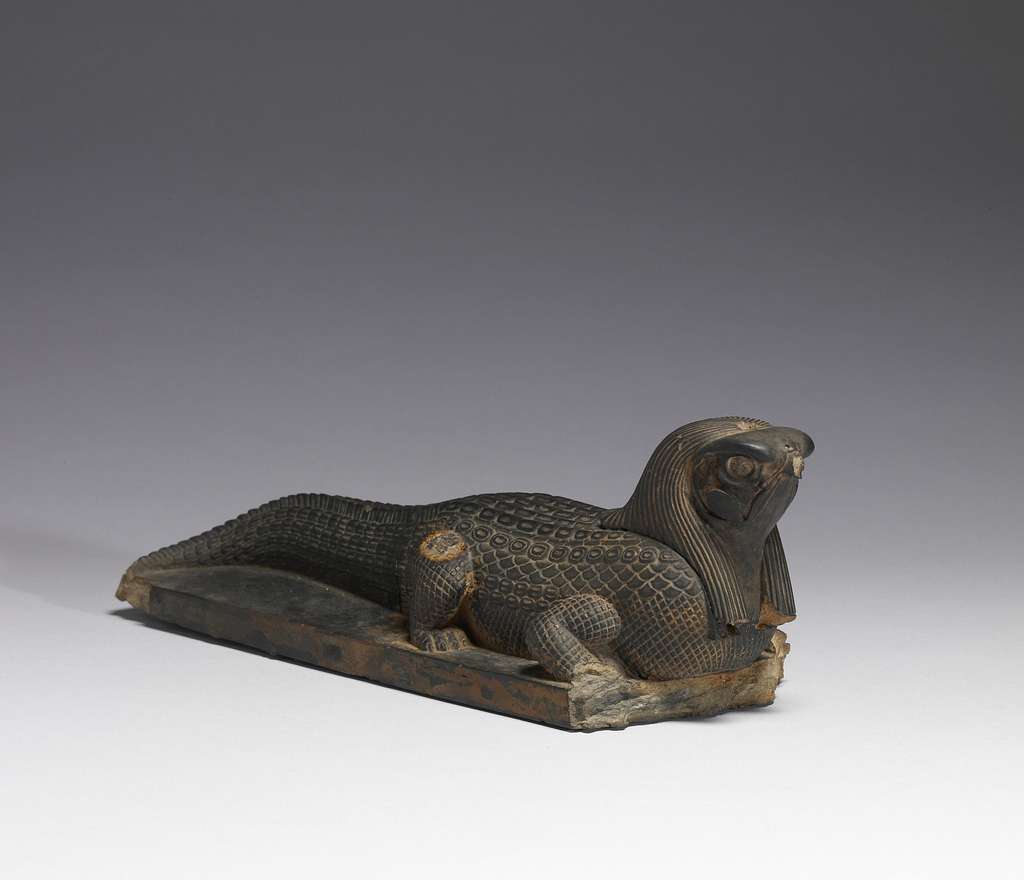The serpentinite figure of a crocodile with the head of a falcon, dating from Egypt’s Late Period (c. 713–332 B.C.), symbolizes the fusion of Sobek, the crocodile god of fertility and protection, with Horus, the falcon-headed god of kingship and the sun. This hybrid form reflects the syncretism in Egyptian religion during a time of political and cultural change, particularly under the influence of the Ptolemaic dynasty.
Sobek and Horus: Merging Earthly and Celestial Power
Sobek, traditionally seen as the god of the Nile and protector of the pharaoh, is combined with Horus’s solar and celestial attributes. The falcon head emphasizes solar power and kingship, while Sobek’s crocodilian form reinforces his dominion over the earth, waters, and fertility. This fusion symbolizes not only divine protection but also the authority over both earthly and heavenly realms.

The Role of Syncretism in Egyptian Religion
The blending of Sobek with Horus or Ra reflects the period’s syncretism, where different gods were combined to adapt to political shifts, especially during the Ptolemaic rule. This hybrid imagery reinforced the divine legitimacy of rulers by connecting Egypt’s ancient traditions with new cultural influences, merging local beliefs with national religious practices.

A Powerful Legacy of Hybrid Iconography
This crocodile-falcon hybrid persisted into the Ptolemaic period, illustrating the enduring adaptability of Egyptian religious iconography. It symbolizes the pharaoh’s divine right to rule, drawing power from both the fertility of the Nile and the solar authority of the sun, ensuring the continuity of the ruler’s protection and kingship.

